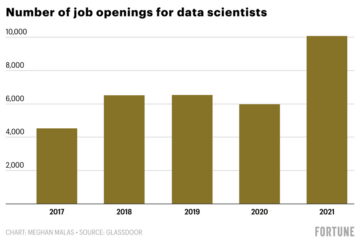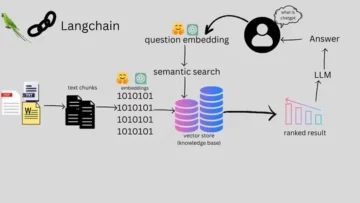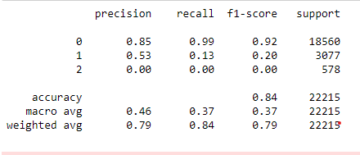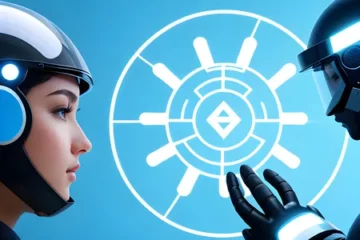Imagine a world where robots and autonomous vehicles can effortlessly navigate through the darkest of nights, relying solely on advanced AI-powered cameras that perceive heat signatures. This futuristic vision is inching closer to reality thanks to an innovative technology called HADAR (Heat-Assisted Detection and Ranging). Developed by a team of researchers from Purdue University and Michigan State University, HADAR has the potential to revolutionize how machines perceive their surroundings, opening up exciting possibilities for various industries. Let’s dive into the world of HADAR and explore its ability to reshape how we interact with AI systems.
Also Read: Red Cat & Athena AI Make Intelligent Military Drones with Night Vision

The Challenge of Heat Vision
Heat vision, a staple of sci-fi movies, has always faced limitations due to how thermal radiation diffuses in the environment. This phenomenon results in blurry, textureless imagery, known as “ghosting.” However, the team of researchers has made a remarkable breakthrough by employing machine learning algorithms to tackle this persistent problem.
Decoding the Heat Signatures with AI
Using the power of artificial intelligence, the researchers trained HADAR to interpret data captured by commercial infrared cameras. HADAR can now accurately determine objects’ physical properties and surroundings, cutting through visual obstructions like fog, smoke, and darkness. By discerning temperature, material composition, and thermal radiation patterns, HADAR creates detailed and clear images, regardless of the environmental conditions.
Bridging the Gap: Daytime Clarity at Night
HADAR’s unique approach sets it apart from active modalities like sonar, radar, and LiDAR, which send signals and detect reflections to infer object presence and distance. Unlike these methods, HADAR uses invisible infrared radiation to reconstruct night-time scenes with the same clarity as daytime. This breakthrough could revolutionize various industries, from self-driving vehicles to touchless security screenings.
Also Read: Drive Into the Future with Jeep’s Next-Gen AI & Autonomous Off-Road Driving Tech
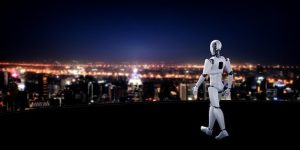
The Road Ahead: Overcoming Challenges
While HADAR holds immense promise, it is not without its challenges. The technology is expensive, requires real-time calibration, and is still susceptible to environmental barriers affecting its accuracy. However, researchers are optimistic that these hurdles can be surmounted in the near future, bringing HADAR into everyday use.
Also Read: How is AI Transforming the Automotive Industry?
A Brighter Future with HADAR
The potential applications of HADAR are vast and exciting. As this technology evolves, it could become an essential component of AI systems within self-driving cars, autonomous robots, and security screenings. By enabling machines to “see” clearly in the darkest of nights, HADAR could transform industries, enhance safety, and pave the way for a more connected and intelligent world.
Also Read: Didi Neuron: Futuristic Driverless Robotaxi
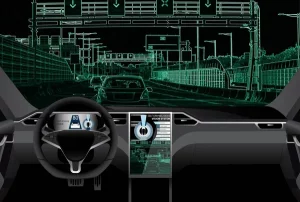
Our Say
HADAR’s journey from the realm of sci-fi to reality is a testament to the power of innovation and AI-driven breakthroughs. With the ability to see as bright as day in the darkest of nights, HADAR is primed to become a game-changer in various sectors. While challenges remain, the researchers’ determination and confidence in the technology’s potential pave the way for a future where machines can perceive their surroundings with unmatched accuracy, making our world safer and more efficient. As HADAR takes its first steps towards widespread adoption, we eagerly await the day when the line between night and day is blurred, and AI perception knows no bounds.
Related
- SEO Powered Content & PR Distribution. Get Amplified Today.
- PlatoData.Network Vertical Generative Ai. Empower Yourself. Access Here.
- PlatoAiStream. Web3 Intelligence. Knowledge Amplified. Access Here.
- PlatoESG. Automotive / EVs, Carbon, CleanTech, Energy, Environment, Solar, Waste Management. Access Here.
- BlockOffsets. Modernizing Environmental Offset Ownership. Access Here.
- Source: https://www.analyticsvidhya.com/blog/2023/07/new-hadar-based-imaging-tool-lets-you-see-clearly-in-the-dark/
- :has
- :is
- :not
- :where
- $UP
- 202
- 300
- a
- ability
- accuracy
- accurately
- active
- Adoption
- advanced
- affecting
- ahead
- AI
- AI systems
- AI-powered
- always
- an
- and
- apart
- applications
- approach
- ARE
- artificial
- artificial intelligence
- AS
- At
- automotive
- automotive industry
- autonomous
- autonomous vehicles
- await
- barriers
- based
- BE
- become
- between
- breakthrough
- breakthroughs
- Bright
- brighter
- Bringing
- by
- called
- cameras
- CAN
- captured
- cars
- CAT
- challenge
- challenges
- clarity
- clear
- clearly
- closer
- commercial
- component
- conditions
- confidence
- connected
- could
- creates
- cutting
- Dark
- data
- day
- detailed
- detect
- Detection
- determination
- Determine
- developed
- distance
- Driverless
- driving
- Drones
- due
- eagerly
- efficient
- effortlessly
- enabling
- enhance
- Environment
- environmental
- essential
- Ether (ETH)
- Even
- everyday
- evolves
- exciting
- expensive
- explore
- faced
- First
- first steps
- Fog
- For
- from
- future
- futuristic
- game-changer
- gap
- holds
- How
- However
- HTTPS
- Hurdles
- images
- Imaging
- immense
- in
- industries
- industry
- Innovation
- innovative
- innovative technology
- Intelligence
- Intelligent
- interact
- into
- IT
- ITS
- journey
- jpg
- known
- LEARN
- learning
- let
- Lets
- like
- limitations
- Line
- Machines
- made
- make
- Making
- material
- max-width
- methods
- Michigan
- Military
- modalities
- more
- more efficient
- Movies
- Navigate
- Near
- New
- night
- no
- now
- object
- of
- on
- opening
- Optimistic
- our
- overcoming
- patterns
- pave
- perception
- phenomenon
- physical
- plato
- Plato Data Intelligence
- PlatoData
- possibilities
- potential
- power
- presence
- Problem
- promise
- properties
- radar
- Radiation
- ranging
- Read
- real-time
- Reality
- realm
- Reflections
- Regardless
- relying
- remain
- remarkable
- requires
- researchers
- Results
- revolutionize
- road
- robots
- safer
- Safety
- same
- scenes
- sci-fi
- Sectors
- security
- see
- self-driving
- send
- Sets
- signals
- Signatures
- Smoke
- solely
- State
- Steps
- Still
- susceptible
- Systems
- tackle
- takes
- team
- Technology
- testament
- thanks
- that
- The
- The Future
- the world
- their
- thermal
- These
- this
- Through
- to
- tool
- touchless
- towards
- trained
- Transform
- transforming
- unique
- university
- unlike
- unmatched
- use
- uses
- using
- various
- Vast
- Vehicles
- vision
- Way..
- we
- webp
- when
- which
- while
- widespread
- with
- within
- without
- world
- you
- zephyrnet

